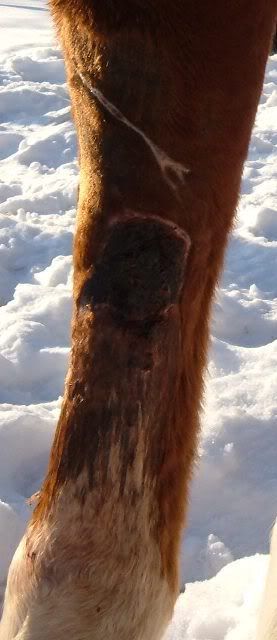Cody7489
Member
 My mare had an injury to her rear pastern about 2 months ago. The vet told me it had turned into proud flesh. I would like to get it removed, but wanted to see if anyone has ever had any experience with it or any results with creams or ointments vs. surgery. Equaide guarantees it will get rid of it, but I'm doubtful. Should I wait and get the larger part removed surgically or try something else? I am putting a steroid cream on it now the vet gave me that is bringing the edema down, and slightly shrinking up the proud flesh (the part that is scabbed on top).
My mare had an injury to her rear pastern about 2 months ago. The vet told me it had turned into proud flesh. I would like to get it removed, but wanted to see if anyone has ever had any experience with it or any results with creams or ointments vs. surgery. Equaide guarantees it will get rid of it, but I'm doubtful. Should I wait and get the larger part removed surgically or try something else? I am putting a steroid cream on it now the vet gave me that is bringing the edema down, and slightly shrinking up the proud flesh (the part that is scabbed on top).
Last edited by a moderator:























































